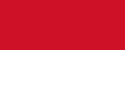Granica belgijsko-francuska
 | |
| Państwa graniczące | |
|---|---|
| Okres istnienia | od 1830 |
| Długość | 620[1] km |
Granica belgijsko-francuska – granica lądowa pomiędzy Belgią i Francją.
Granica ta powstała w roku 1830[2], w którym to Belgia uzyskała niepodległość.
Przebieg
Na wschodzie granica rozpoczyna się w trójstyku z granicami: francusko-luksemburską i belgijsko-luksemburską okolice miasta Aubange. Następnie biegnie w kierunku północno-zachodnim .Kończy się nad kanałem La Manche pomiędzy belgijskim De Panne i francuskim Malo-les- Bains.
Belgijskie prowincje przygraniczne
- Flandria Zachodnia
- Hainaut
- Namur
- Prowincja Luksemburg
Francuskie departamenty przygraniczne
Galeria
Zobacz też
Przypisy
- ↑ Belgia, [w:] Encyklopedia PWN [online] [dostęp 2017-11-23].
- ↑ Belgia. Historia, [w:] Encyklopedia PWN [online] [dostęp 2017-11-23].
Media użyte na tej stronie
Autor: Pedro A. Gracia Fajardo, escudo de Manual de Imagen Institucional de la Administración General del Estado, Licencja: CC0
Flaga Hiszpanii
House colours of the House of Habsburg
Autor: User:LimoWreck, Licencja: CC BY 2.5
Boundary stone on the Belgian-French border. On the border between Bléharies, Brunehaut, Hainaut, Belgium and Maulde, Nord-Pas-de-Calais, France
Belgium map from CIA World Factbook (since 8 maja 2006), converted from original GIF format
Flag of the Ottoman Empire (c. 1750s).[1]
A variety of Ottoman naval flags with crescents are recorded in Western sources during the 18th century.
Flaggen aller seefahrenden Nationen shows several Turkish naval flags with three crescents (heraldic decrescents, horns pointing away from the hoist as in the later Ottoman flag)Autor: Jean-Pol GRANDMONT, Licencja: CC BY 2.5
Comines (Belgium), view of the rue du fort and the bridge on the Lys river from Comines (France).



















